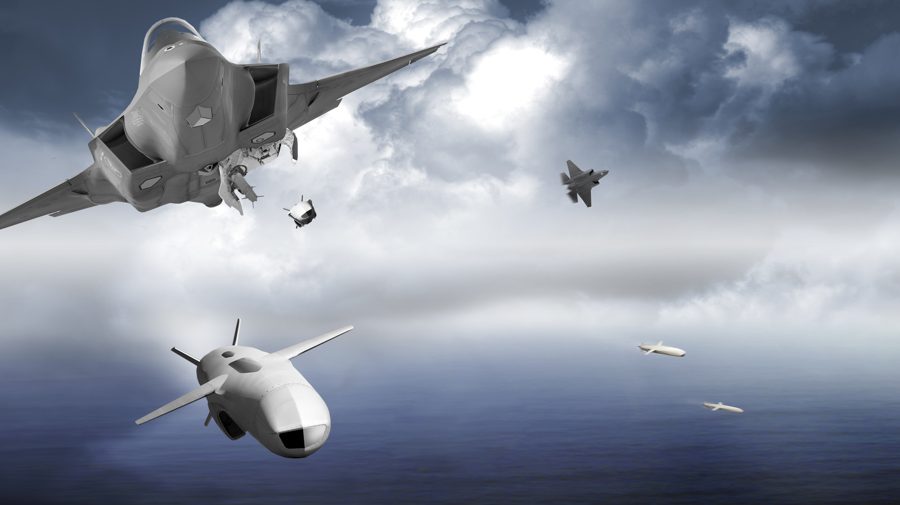The Air Force awarded Kongsberg Defense and Aerospace of Norway a $141 million contract on May 31 for the first lot of 48 Joint Strike Missiles, which will equip the service’s F-35A Joint Strike Fighters. It’s the first time the service has bought a tactical missile from another country for operational use since the early 1990s.
The missile will carry the designation “AGM-184A Kraken.”
The Air Force plans to buy 268 JSMs through fiscal 2028 at a cost of $848 million, according to the service’s fiscal 2025 budget documents. The buy profile calls for 48, 50, 54, 57, and 58 missiles across fiscal 2024-2028, with annual funding projected to rise from $161 million to $180 million across that period. In its unfunded priorities list for the fiscal 2025 budget request, U.S. Indo-Pacific Command asked Congress to triple the buy of 50 missiles for the upcoming year.
The JSM is a variant of the Naval Strike Missile developed by Kongsberg with Raytheon. Raytheon makes some components of the NSM in the U.S., but it’s unclear whether the firm will make the same components for the JSM; the company did not immediately respond to queries. The contract says the work will be performed in Kongsberg, Norway, by August 2026.
Two JSMs can fit internally on an F-35, and four more can be carried on wing stations when stealth is not required. The weapon can be used against ground or surface targets and has a quoted range of in excess of 300 nautical miles, depending on the launch profile. It uses an imaging infrared seeker and is guided by GPS, terrain reference, and inertial measurement.
The weapon has the means to communicate with other missiles and its launcher for target updates, and also has onboard systems to help it discriminate targets independently. Kongsberg says these features make it a “fifth-generation” missile. The missile is of the sea-skimming type, and when targeted against a ship, detonates at the water line.
The F-35 Joint Program Office has said the JSM will be certified for most, if not all, F-35 users.
The U.S. weapon most similar to the JSM is the Lockheed Martin AGM-158C Long-Range Anti-Ship Missile (LRASM); they have similar range but the JSM lacks the LRASM’s stealth capabilities.
Development of the JSM, which was funded by Norway and Australia, has been underway since 2009. In 2015, the weapon was test-fired from an Air Force F-16 at the Utah Test and Training Range.
The contract includes containers, all-up rounds, and test equipment.
The Air Force last bought a foreign tactical missile in the late 1980s and early ‘90s, acquiring just over 200 “Popeye” missiles from Rafael of Israel. The weapon was purchased in two batches, was given the designation AGM-142 “Have Nap” and equipped the B-52H with a standoff, heavy precision conventional strike capability. The Have Nap was withdrawn in 2004.
In budget justifications, the Air Force said the JSM is “a near-term solution for long-range precision strike capability against maritime surface and land targets in highly contested environments.” It works in “GPS-denied environments,” and is survivable “against advanced threat systems.” The “initial fielding and operational use” will be on the F-35A.
The Air Force said JSM development is complete but F-35A integration is still underway.
The JSM funding requested “supports the entire weapon system to include resolution of obsolescence, end-of-life buys, bridge buys, supplier/parts replacement, to include electronic components used commercially and in short supply, and qualification activities to preserve and increase future production capabilities and capacity.”
The Air Force said the JSM leverages all F-35 developmental test and evaluation activities so far, and relies on the “integration of network-enabled weapons (NEW) capabilities,” but said its “key characteristics are expected to be classified.”
Kongsberg Aerospace and Defense president Eirik Lie said the selection of JSM for the U.S. Air Force and the Royal Norwegian Air Force “fully supports NATO’s vision for interchangeability of equipment between allied nations.”


